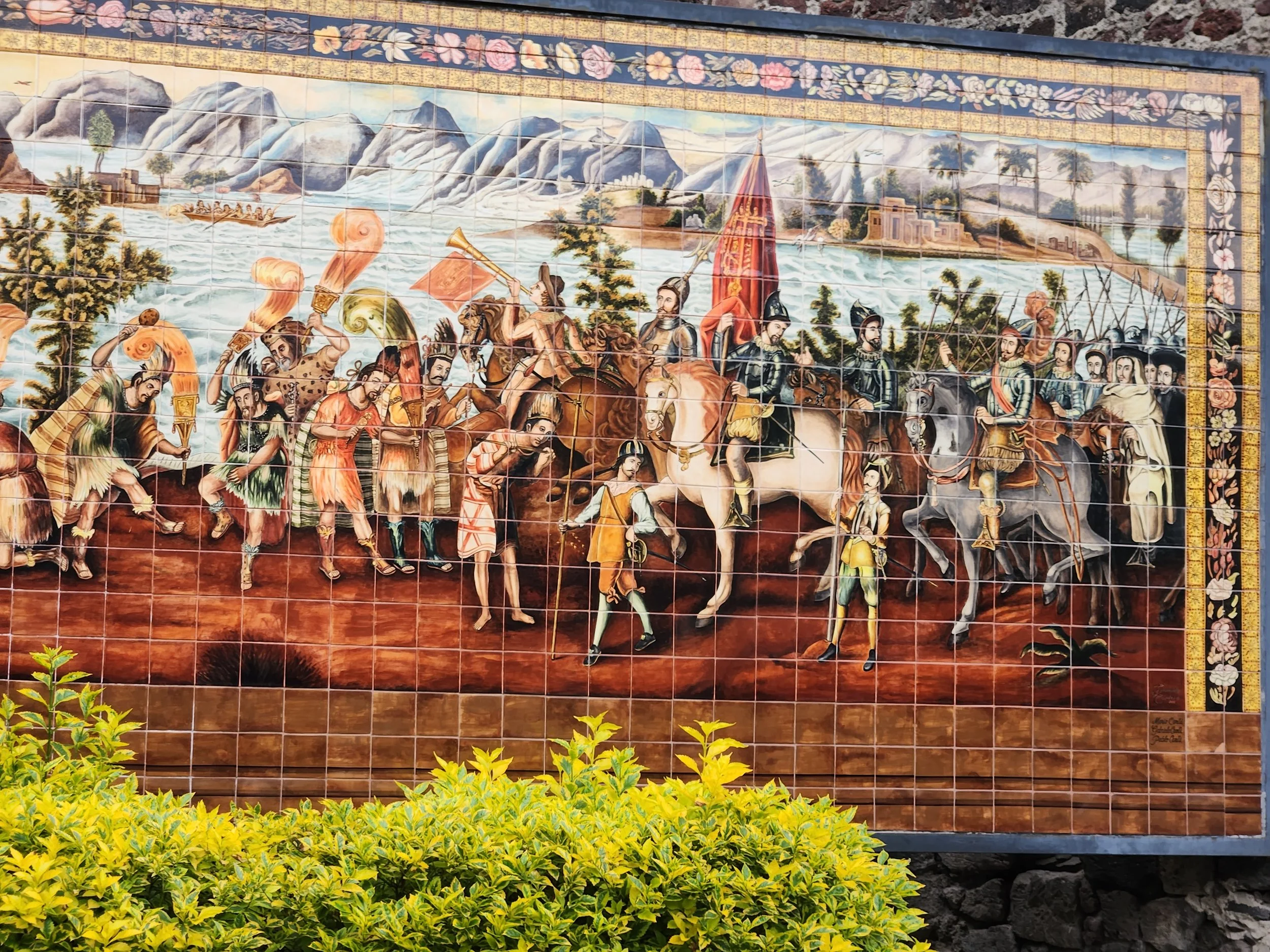Sonora: A Brief Introduction
Mexican State of Sonora
Sonora is one of the thirty-two states in Mexico and is bordered by Arizona and New Mexico directly to the north. Renowned as the home of the Sonoran Desert, this iconic expanse of land is worth seeking out for its special geography and culture.
There are multiple theories as to the origin of the name Sonora. Some suggest that it is an Indigenous corruption of the Spanish word Señora, after Nuestra Señora, Our Lady in English, referring to the Virgin Mary. This name was given by the conquistador Francisco Vázquez de Coronado to a river valley in the central portion of the state on his journey north to the fabled seven cities of Cibola. Others offer an alternative origin, that the word comes from a Spanish corruption of an Indigenous Sonoran word for corn, “Xunut.”
Indigenous peoples encounter the Spanish conquistadores from a tile mural in Mexico City.
Whatever the origins of the name, this northwestern state is home to a number of Indigenous groups who have resided there long before the arrival of the Spanish in the 16th century. These peoples include the Guarijíos, Yaquis, and Mayos whose traditional territories now make up the southern half of the state. The Seris, who call themselves Comcáac, have lifeways and are inextricably linked to the marine environment of the Gulf of California and the desert. The Ópatas resided in the river valleys of the eastern half of the state and it is from their language that perhaps the origin of the name Sonora derives from. The Tohono O’odham, who historically have been called Pima and Papago, live on both sides of the border, not only west of Tucson on the Tohono O’odham Nation.
In Comcáac Territory.
Sonora was first traversed by non-indigenous people in the 1500s. The shipwrecked Pánfilo de Narváez expedition survivors, including Cabeza de Vaca and Esteban the Moor, were heading south to find their Spanish comrades in Mexico. They finally encountered their countrymen near Sonora’s southern border with Sinaloa after a period of years of being traded as slaves and offering their services as medicine men among the tribes of the Southwest. Their marvelous accounts of their northern experiences had a direct role in the commission of the Fray Marcos de Niza reconnaissance and Coronado’s expedition.
Nearly a century following explorers such as Coronado, the black-robed Jesuit order took up the colonization of Sonora with their missionization of Sonora’s Indigenous peoples. The Catholic order, referred to as the ‘light cavalry’ of the Pope during the Counter-Reformation bestowed the state and Arizona with one of its most influential historical figures, Padre Eusebio Francisco Kino. Kino, a German-speaking Italian from the Alpine Tyrol region was a tireless missionary explorer and is regarded as an early peacemaker between the Native Americans and Spanish colonists in what is now the borderlands. This Jesuit black robe wore many hats: he was an astronomer, cartographer, shipbuilder, Arizona/Sonora’s first cowboy, and is largely credited with the discovery that California was not an island as was commonly thought in his era but a giant peninsula.
A volcanic rock monument dedicated to Padre Kino we visit on the Tucson Origins Tour.
Today, Sonora is one of the northern giants of the Mexican economy. The state’s commerce is firmly rooted in its mineral wealth as seen in communities such as Cananea, also known as the cradle of the Mexican Revolution as well as agribusiness. Alongside mining and produce, its economy is based around a livestock and ranching tradition that began by the foresighted Father Kino and is apparent in the regional gastronomy with its unrivaled quality carne asada, machaca, and mochomos.
Heating tortillas for carne asada tacos on the Bacanora tour.
Sonora possesses hundreds of miles of coastline with what Jacques Cousteau once referred to as the ‘aquarium of the world,’ the Gulf of California, and as such, a fishing economy that can be encountered in Sonoran port cities such as Guaymas-San Carlos, Kino Bay, and Puerto Peñasco. On the other side of the state, in the river valleys of eastern Sonora have largely preserved their colonial charm and offer sustainable heritage tourism opportunities.
View of Banámichi Plaza, in the Río Sonora valley, from our hotel on the Río Sonora Tour.
~~~~~~~~~~~~~~~~~~~~
Like this article and learning about the cultural heritage of the borderlands?
Sign up for our free digital magazine for more and receive our 5 Things You Need to Know Before Visiting Mexico Checklist.






